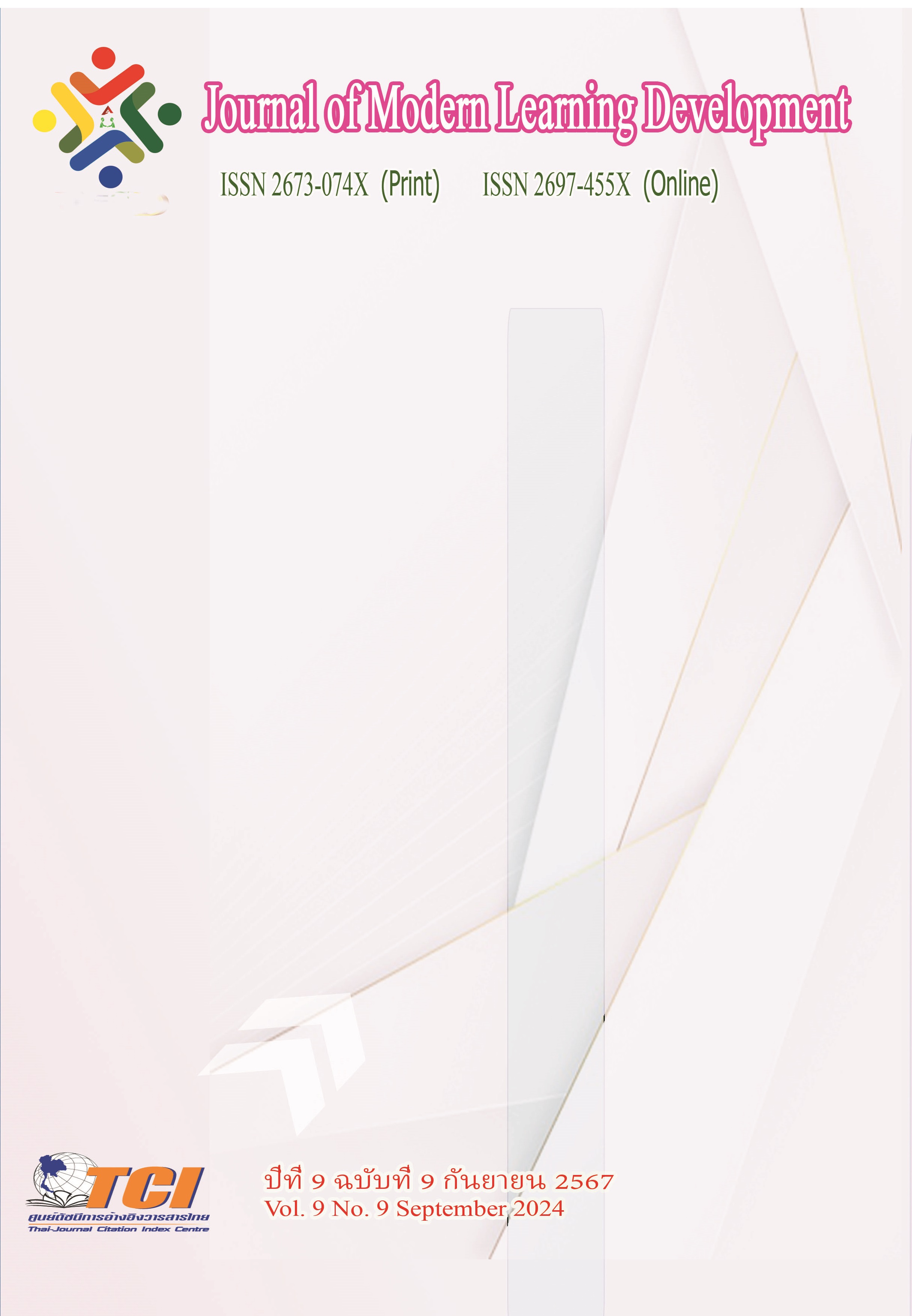The Music Application Handbook for Music Teacher at Jimo District No.2 Middle School
Main Article Content
Abstract
Jimo District No. 2 Middle School still uses traditional teaching methods such as PPT presentations, CDs or video playings, and online media materials. Resulting in poor music teaching results; students lack a deeper understanding; students' motivation and participation in learning are low; and learning efficiency is also very low. Applying technology to music learning as a teaching tool will give students a better understanding of music skills. Teachers will also develop more modern teaching skills.
This research focuses on developing teachers' teaching skills. The objective of the research was 1) to study the music textbook in Grade 8 at Jimo No. 2 Middle School. 2) to study the music application from key informants, and 3) to write the music application handbook. Qualitative research methods were used in this research. Review the literature from documents, academic works, and related research. Gathering the data from two groups of key informants, such as teachers and music application experts, through in-depth interviews to write a music application handbook, Three experts evaluated this song book to check its quality. The researcher found that the music textbook in grade 8 student at Jimo District No. 2 Middle School aims to cultivate students' musical literacy and comprehensive quality. Through rich and diverse teaching content and methods. Emphasis on the basics of music, knowledge, skills such as rhythm, speed, music types and expression. This will lead to the integration of content with technology to enable teachers to develop more modern knowledge and teaching. This Music application handbook for teachers is an integration of music and technology, which 3 experts recommend 5 interesting music application and agree to choose Garage Band in this handbook. The Handbook is divided into 1. Overview of Handbook 2. GarageBand Music Applications 3. GarageBand for Teacher and 4. Music Production. This handbook will become a hands-on music application for Grade 8 at Jimo District No. 2 Middle School, which makes it easier for teachers to master the application of music. and improve teaching methods and modern teaching results.
Article Details
References
Antoni, P. (2023). Listening to The World: A Brief Survey of World Music. City University of New York (CUNY).
Erkan, D. (2021). Music Students' Use of Mobile Applications for Learning Purposes. International Journal of Modern Education. 5 (2).
Fang, W., Quiles O. L., and Yangzhan H. (2022). Design of Music Education Software APP Based on Convolutional Neural Network. https://www.researchgate. net/publication /366408283_Design_of_Music_Education_Software_APP_Based_on_Convolutional_Neural_Network.
Feng, C. (2018). The Application of MIDI Music Production in College Music Teaching. Journal of Social Sciences Studies. (3). 357.
Ministry of Education. (2018). China issues action plan to improve basic education. http://en.moe.gov.cn/documents/laws_policies/202309/t20230901_1077836.html.
Ourmusicworld. (2024). What Are the 10 Main Instruments in Pop Music?. https://medium. com/@angietaylor197411/what-are-the-10-main-instruments-in-pop-music-89f998 6632e9
Sung, S. J. (2016). Primary School Teachers' Use of Music for Classroom Teaching and Management. Journal of Music and Human Behavior. 13 (2), 1.
Supaporn C. (2022). The Usage of Music Video Lesson for Music Teaching : A Case Study on the Lack of Teachers for the Schools. Journal of Roi Kaensarn Academi. 8 (1).


